Fluffy rice, mild spiciness and the flavour of onion fried in desi ghee – A perfect quick breakfast to start the day is the tasty Poha. It is one of the most famous food of Maharashtra. In Maharashtra it is traditionally known as “Kanda poha”. Flattened rice is called Avalakki in Kannada, Atukulu in Telugu, Aval in Tamil and Malayalam etc. This famous recipe is recognized with different names all over the country but the love for Poha remains the same.
Poha is prepared by using ingredients like flattened rice, chilli, onions, peanuts and other spices. It can either be served for breakfast or evening snack.Poha is prepared in different varieties, let us know about a few most loved varieties of Poha. Let’s get started with the preparation of Poha!
Kanda Poha | Avalakki
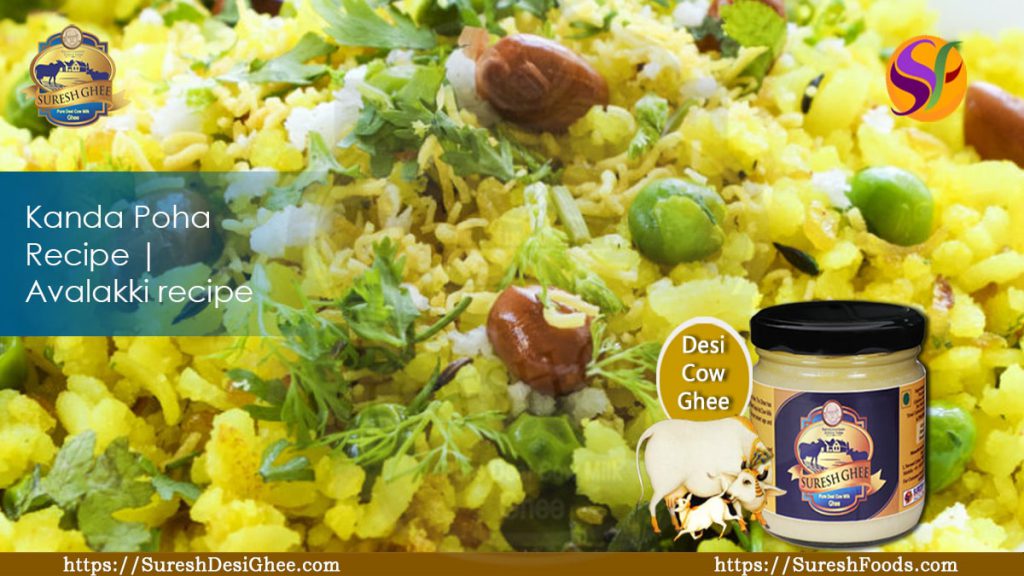
Ingredients
- Poha (flattened rice) – 2 or 3 cups
- Desi ghee – 1 tbsp
- Mustard seeds – 1 tsp
- Cumin seeds – 1 tsp
- green chilies – 2 or 3 (finely chopped)
- Onion – 1
- Potato – 1
- Peanuts or cashews – ½ cup
- Turmeric powder – ¾ tsp
- Curry leaves
- Salt
- Coriander leaves – ½ cup
- Lemon juice – 1 tsp
Directions
- Wash the poha twice and keep it aside for about 15 minutes until all the water drains off.
- Take a pan and add desi ghee to it.
- Add mustard seeds, cumin seeds and peanuts or cashews, then let them crackle.
- Now put some finely chopped chills and salute.
- Add curry leaves followed by onions and salute it until the onions turns golden yellow in colour.
- Add turmeric powder if you like to get a yellow coloured poha.
- Now add salt according to your taste and a pinch of sugar to balance the taste.
- Mix the poha to the mixture and give it a good mix.
- Sprinkle some coriander leaves and squeeze in some lemon juice to it.
- Cook it for few minutes and switch off the flame.
- Your hot and spicy poha is ready to serve.

Buy Pure Desi Cow Ghee Online : Order Now. Free Shipping
Tips to follow
- Do not wash the poha many times as it will turn more soggy.
- Do not forget to strain out the water and just let it drain off water completely.
- You can also add veggies and peas also.
Dahi poha | Mosaru Avalakki
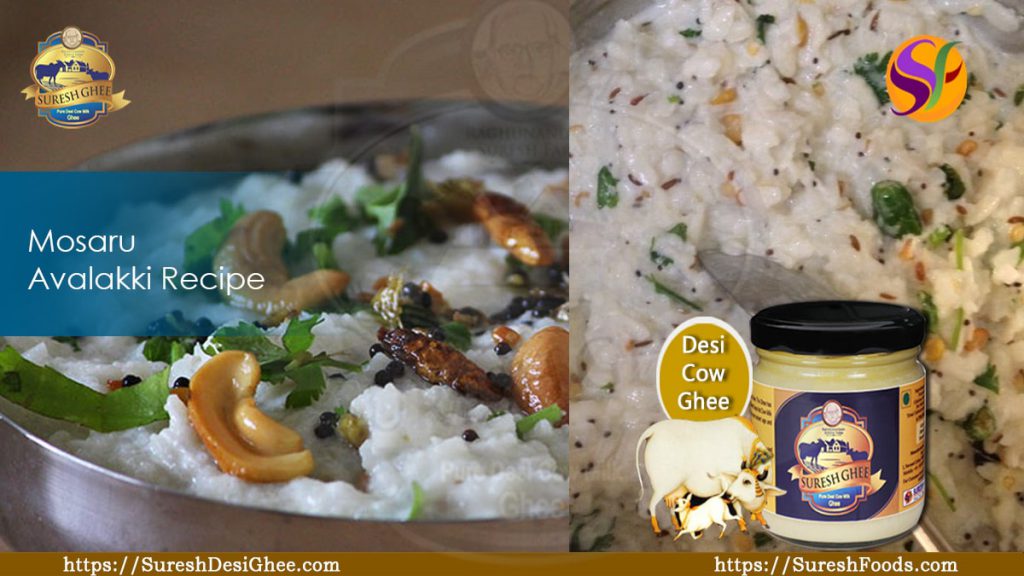
Dahi poha or the mosaru avalakki is mainly prepared during Krishna Janmashtami in Karnataka. It gives a cooling effect after eating much of oily and sweet dishes.
Ingredients
- Poha / flattened rice – 1 ½ cup
- Curd – 1 cup
- Water to wash and soak
- Desi ghee – 2 tsp
- Mustard seeds – ½ tsp
- Jeera – ¼ tsp
- Hing – pinch
- Curry leaves
- Urad dal or uddina bele – 1 tsp
- Chana dal or kadle bele – 1 tsp
- Red chilli – ½
- Green chilli – 1 or 2
- Peanuts – ½ cup
- Coriander leaves
Directions
- In a bowl, take the poha and pour some water, rinse it and discard the water. Do this twice.
- Now add little water and keep the poha to soak in water
- Take a pan, add desi ghee and let it heat.
- Add mustard seeds and jeera to it. Let them crackle.
- Sprinkle a pinch of hing to it.
- Add chillies, urad dal, chana dal and curry leaves.
- Now add the broken red chilli to the tadka.
- Once the dals turns golden yellow, add peanuts to it.
- When you see that the peanuts have roasted well you can add coriander leaves.
- Now to soaked poha, add salt to taste.
- Next pour curd to the soaked poha or avalakki and give it a good mix.
- Add the tadka to it and mix it well.
- Your dahi poha or Mosaru avalakki is ready to serve for a hot summer day.
Tips to follow
- The poha is kept in water so that the poha becomes soft.
- Use sweet curd, see to that the curd is not to soar.
Mashed poha | Gojju Avalakki
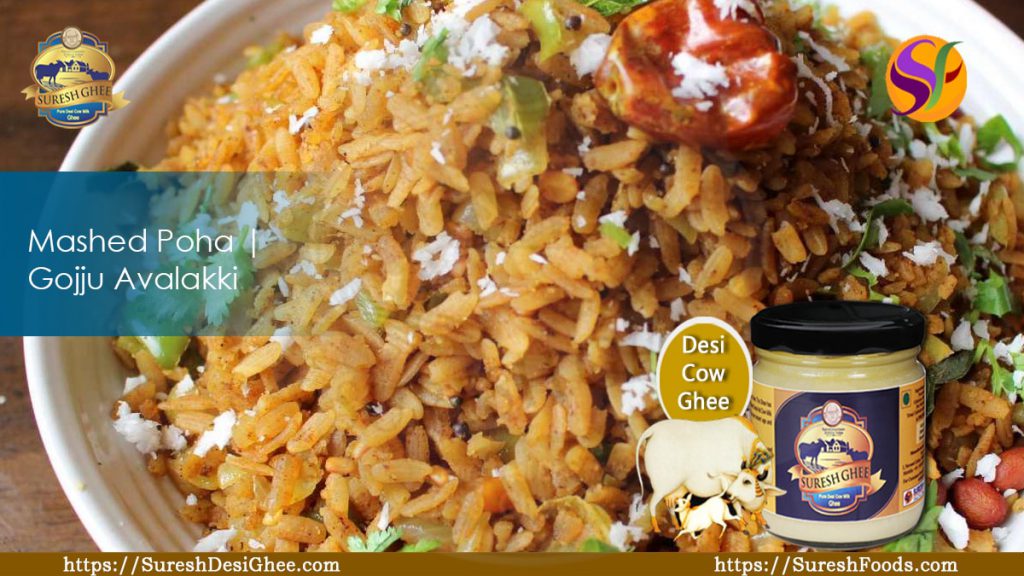
The combination of mashed poha or avalakki with spices and tangy taste makes it a tasty food down in the south. People in Karnataka prepare gojju avalakki as Prasada during festivals or special occasions.
Ingredients
- Poha or avalakki – 1 ¼ cup
- Tamarind pulp – 2 tbsp
- Jaggery – 1 tbsp
- Puliogare powder – 1 tbsp
- Salt – 1 tsp
- Water – 1 cup
- Oil – 3 tsp
- Mustard seeds – 1 tsp
- Chana dal or kadle bele – 1 tsp
- Urad dal or uddina bele – 1 tsp
- Red chilli – 1
- Curry leaves
- Coconut – ½ cup (grated)
Directions
- In a large mixing bowl take tamarind pulp, jaggery, puliyogare masala and salt to taste.
- Add water and give it a good mix until the jaggery dissolves completely and keep it aside.
- Now in a blender take thick poha/ avalakki.
- Blend to a consistency of coarse powder without adding any water to the poha.
- Transfer the poha or avalakki powder into the masala mix and give it a good mix to it.
- Allow it to rest for 10 minutes and let it absorb the water.
- If any lumps are formed, mix it and see to that there are no lumps formed.
- Now in a saucepan, heat oil and crackle the mustard, chana dal, urad dal, dried red chilli, chilli and few curry leaves.
- Add in the avalakki mixture along with coconut and mix it.
- Cover and simmer the poha for about 5 minutes.
- Your mashed poha or gojju avalakki is ready to be served, you can also garnish it with grated coconut.
Tips to follow
- You can add puliogare powder/ rasam powder/ chilli powder or any other masala powder that you prefer.
- Keep the measurement of 1 cup water for 1 ¼ cup of poha or avalakki.
- You can also add peanuts to the tempering so that it gives a crunch to your soft poha.
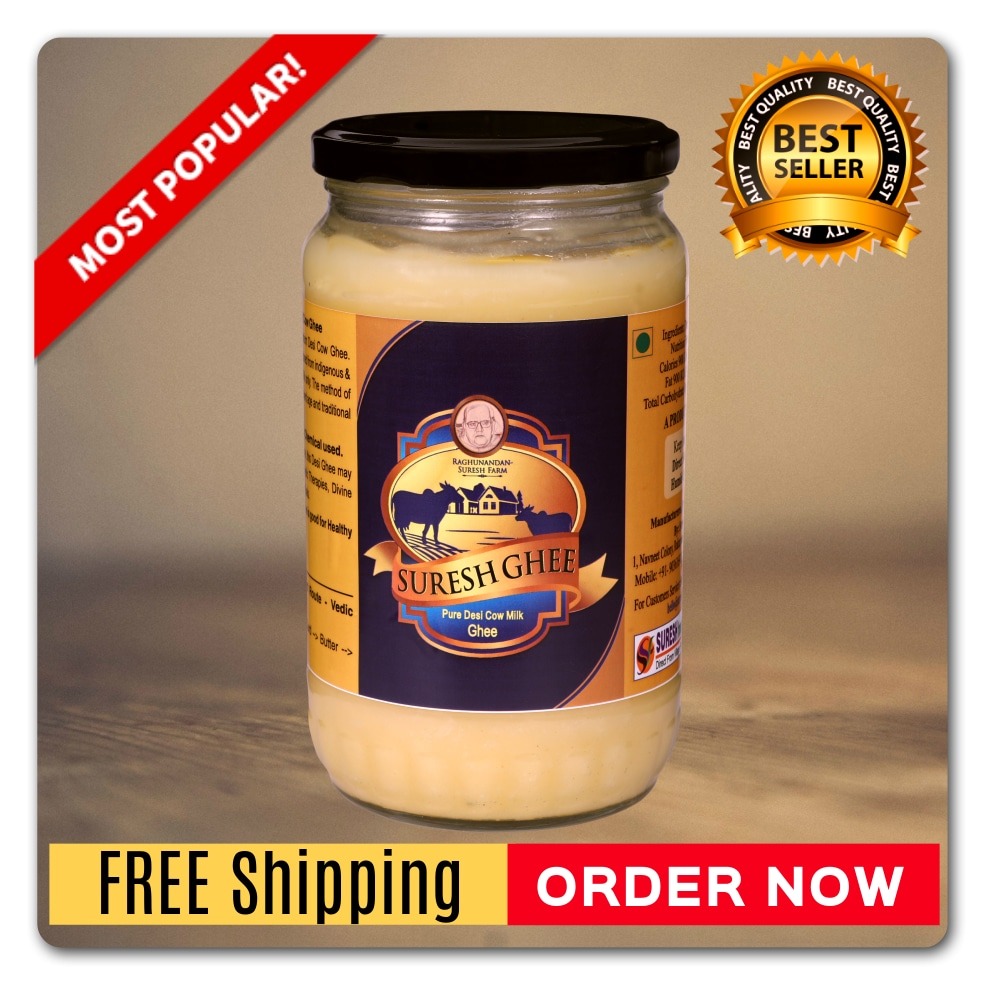
Buy Pure Desi Cow Ghee Online : Order Now. Free Shipping
Coconut milk poha | Nalla Rosanche fov
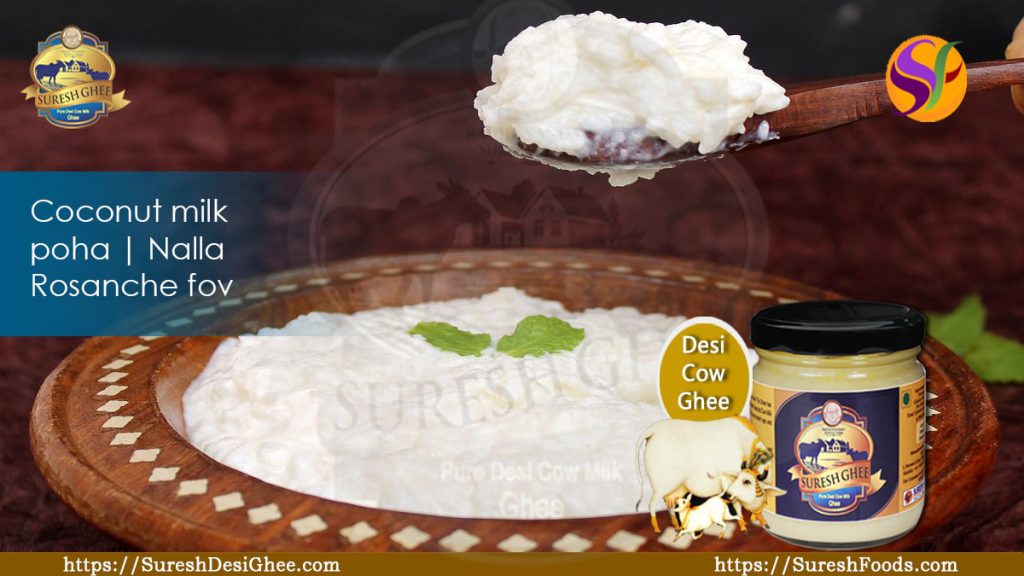
This coconut milk poha is made by Goans during Diwali festival. It is a simple recipe which has a sweet taste and is called as Nalla Rosanche fov in goa.
Ingredients
- Poha or avalakki – 1 cup
- Cardamom pods – 6
- Coconut – 1 cup (grated)
- Jaggery – 1 cup
- Salt
- Water – 2 cups
Directions
- Wash the poha and let it dry in a big strainer. Keep this aside for about 15 minutes.
- Grind the grated coconut and add water to extract the milk.
- Add jaggery to this coconut milk and mix it well.
- Add cardamom pods or cardamom powder to it.
- Add 1 cup of water to the poha and cook it on a medium flame for about 2 minutes.
- Now to it add the coconut milk and jaggery mixture to the poha and cook it for 2 minutes.
- Add very little salt to taste and mix it well.
- Your poha is ready to serve within minutes with little effort.
Tips to follow
- You can add some more water if the poha and coconut, jaggery mixture becomes too thick.
- You can also avoid salt and have it like a sweet dish as you have added jaggery for sweetness.
In different states of our country, poha is not only called with different names but it also prepared with different methods. The ingredients which are available locally in those regions are used to get a tasty poha. May it be spicy or sweet, poha has made its place. Try out these different varieties of poha recipes at home. None of these recipes are going to take a lot of time. They are all easy and quick to prepare. Prepare them for breakfast and you can explore the cooking techniques as well as taste of the different regions down in the south. And hurry up! If you are looking for grass-fed desi cow ghee, order now. The best feature of Suresh Foods is, you get it ‘Directly from the farms which are mainly grass-fed cows’. Visit our website https://sureshfoods.com/.
FAQ
Poha, rich in dietary fiber, caters as a natural source that supports weight management and delivers beneficial nutrition. The fiber consistency in Poha not only encourages a sense of fullness but also absorbs water and elevates, efficiently curbing your appetite. Consequently, intake of Poha can help minimize the propensity to indulge in unhealthy snacks throughout the day.
Combined with a variation of nutrients, Poha consists of carbohydrates, fats, proteins, fiber, vitamins, and minerals. Remarkably, it is plentiful in complex carbohydrates, a healthier form of this beneficial nutrient. For a rapid, delightful, and low-calorie breakfast choice teeming with nutrients, Poha demonstrates to be an excellent option.
Certainly, calories deliver an important role in the weight loss journey, and maintaining them can be a tedious task. Sustaining a calorie deficit is beneficial for shedding pounds. Poha, fortunately, is low in calories while providing a satisfying and wholesome meal. Implementing Poha in your diet supports curbing the intake of unhealthy, high-calorie foods that could add towards weight gain. Recent research signifies that a low-calorie diet is less likely to trigger inflammatory responses and may minimize the risk of chronic and age-related illnesses.

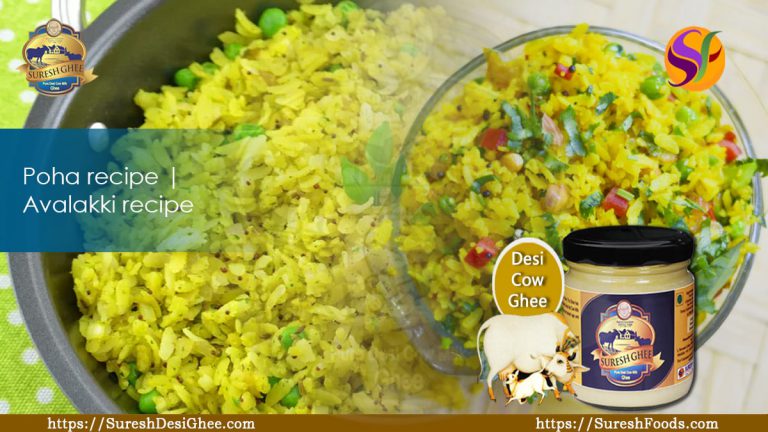


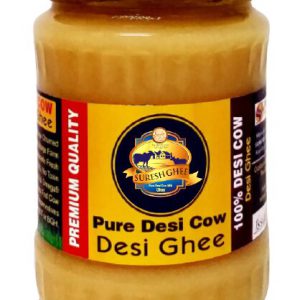
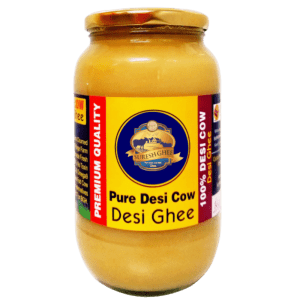
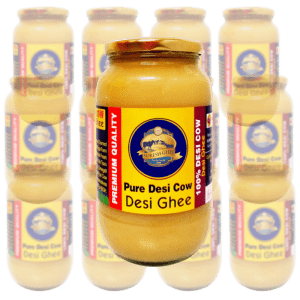
 WhatsApp us
WhatsApp us
Naveen m...